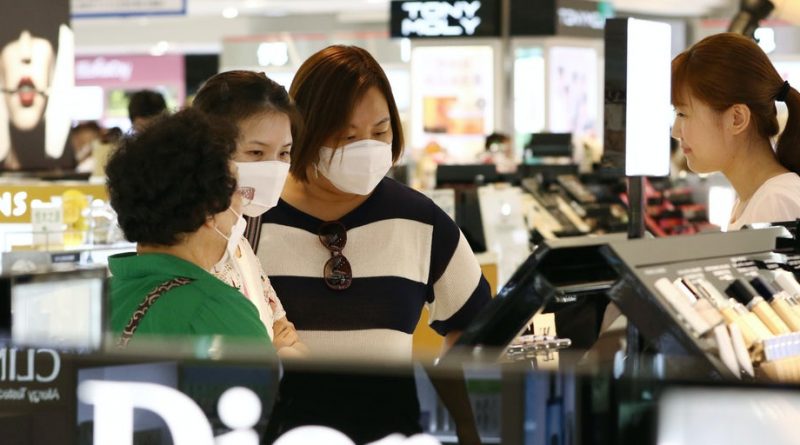Luxury’s Daigou Economy, Explained | BoF Professional, Luca’s Letter
Over the past decade, agents known as daigou or “surrogate shopper” have exploited significant price differences between luxury goods sold in Mainland China and the same products purchased overseas to fuel a grey market worth billions of dollars per year.
The industry offers lucrative margins for sellers and sizeable discounts for shoppers. For example,La Mer’s Crème de la Mer Moisturiser 60m, which retails for RMB 2,680 in China, can be purchased for RMB 1,600 through daigou sellers, a 67 percent discount.
Once dominated by individual operators, the daigou business has given rise to small empires using large online platforms. Sales grew rapidly between 2008 and 2013 with a CAGR at about 100 percent. But in 2013, when daigou sales hit about RMB ~75 billion, they started to shrink, falling to RMB ~40 billion by 2015, according to the China Electronic Commerce Research Center. The decline was largely due to regulation and the lowering of import tariffs and consumption taxes, reducing price differences between Mainland China and overseas markets.
South Korean duty-free shops have long been the most prevalent source of daigou supply. This is due to a few drivers. First, there is the country’s physical proximity to China. Then there are favourable pricing factors. The South Korean government has issued 26 duty free licenses to in-city retailers, creating fierce competition and, along with it, price wars, VIP incentives and bulk discounts to attract high-volume daigou operations, which account for significant sales.
Another factor is Chinese demand for Korean cosmetics, which benefit from the popularity of K-drama and K-pop celebrity culture. Today, more than 60 percent of South Korea’s duty-free revenue is driven by daigou, with cosmetics being by far the largest daigou category.
DECODING THE DAIGOU VALUE CHAIN
Here, we deep-dive into two essential parts to the South Korean daigou value chain for cosmetics: procurement and logistics. Here’s how they work.
Procurement: From Individuals to Daigou Companies
Individual daigou operate a direct model, whereby sellers purchase items directly from Korean duty-free shops. These types of daigou shoppers are mostly tourists or international students, whose shopping frequency and volumes are low and whose profit margins are slim, derived from VIP discounts of 5 to 20 percent, product promotions and the reselling of sample gifts.
Individual daigou face several challenges. Although checks are infrequent, Chinese customs can charge duties, consumption tax and VAT on goods exceeding RMB 5,000. The tax rate for cosmetics is 50 percent, which can considerably hurt profitability.
What’s more, Korean duty-free shops impose purchasing limits on certain products — particularly hot selling items — to ensure sufficient supply to ordinary tourists and prevent oversupply to individual daigou who might resell products in the domestic market, frustrating their access to supply. And finally, duty-free shops often bundle popular products with less popular items, which increases the working capital pressure on individual daigou.
Daigou companies are able to overcome the key challenges faced by individual daigou.
Individual daigou sometimes team up with travel agencies, which benefit from sales rebates from Korean duty-free shops aiming to encourage coordinated group tourist consumption. On average, the sales rebate offered by leading duty-free operators is about 20 percent (25 to 30 percent for local Korea brands and 15 to 20 percent for international brands). Travel agencies usually take a 1 to 2 percent commission on these sales and leave the rest to individual daigou.
With these rebates, in addition to the underlying price differentials, gross profit margins for daigou range from about 30 to 50 percent for Korean brands and 20 to 40 percent for international brands. However, individual daigou, even when allied with travel agencies, still face challenges with customs, purchase limits and bundling.
Some travel agencies form sophisticated daigou companies, capitalising on high sales rebates to build their own inventories and ship to Mainland China where they can distribute digitally, often through WeChat, Taobao and stores on specialised cross-border third-party platforms, such as smzdm.com, fengqu.com, 55haitao.com, hitao.top and ymatou.com.
As procurement volumes are high and stable, daigou companies have power to negotiate better prices with duty-free shops. They are also able to overcome key challenges faced by individual daigou, bypassing product bundling, for example. Some daigou companies have even been able to extend upstream and negotiate directly with brands to obtain additional discounts.
Logistics: How Daigou Move Merchandise
Individual daigou typically carry products to Mainland China themselves, evading customs checks. But daigou companies with high shipment volumes often send products to Hong Kong first, then transport the goods to Shenzhen on the Mainland using parallel traders (“passing customs smoothly”) who can take advantage of multiple-entry visas to import goods from Hong Kong to Mainland China.
Daigou companies also work with customs brokers which provide one-stop logistics services, including customs clearance and transport. The fee is higher than what it would cost to simply express mail the goods, but there are no additional tax charges. Cosmetics are relatively light and small, and the cost of shipping to Hong Kong is affordable when spread across individual product sales, but the process takes one to two weeks, forcing both daigou and customers to wait.
Shipping products directly from Korea to customers in Mainland China comes with a 50-percent postal tax when the value of the goods exceeds RMB 1,000. But daigou sellers often go via bonded warehouses in Mainland China, which enables them to pay a 23-percent cross-border e-commerce tax instead. Custom payments are due only after the goods are sold, and when dispatched from a warehouse on the Mainland, shipments to customers take only one to two days.
THE FUTURE OF DAIGOU
Covid-19 has disrupted the daigou business, though daigou companies that negotiate directly with duty-free shops and typically ship their goods have fared better than individual operators.
Retailers that depend heavily on daigou sales will have to find alternate revenue sources.
During the height of the pandemic in China, the number of Chinese tourists traveling to South Korea dropped sharply: down 77 percent and 96.6 percent, respectively, in February and March, with traffic to Korean duty-free shops falling about 86 percent in March. When Covid-19 spread to international markets in April, the Korean government required inbound tourists to quarantine for two weeks. This sharply reduced individual daigou visits.
Starting in May 2020, Korea’s leading duty-free shops moved to soften the blow with complimentary Hong Kong shipping services for individual daigou on orders greater than $10,000. Duty-free and travel retail sales in Korea still fell by as much as 80.7 percent in the first half of 2020, according to Center 4 Duty Free, but sales of cosmetics fell the least, dropping by only 17.5 percent due to sustained demand from daigou.
Korea’s daigou business will recover, given the channel’s strong price incentives and new online ordering and shipping options. But the model was already facing pressure before the pandemic. In recent years, Chinese duty-free shops and department stores have grown their offering. Meanwhile, regulators have lowered import tariffs and consumption taxes, narrowing the price differentials that are crucial to the daigou business model. A law implemented in early 2019 forced daigou to formally register as SMEs with negative tax implications, squeezing margins.
Now, a planned network of “arrival shops” in Mainland China — giving Chinese consumers six months after their return from abroad to buy locally at duty-free prices — could further pressure daigou activity. Retailers that depend heavily on daigou sales, such as South Korea’s duty-free stores, will have to find alternate revenue sources. Brands, too, will suffer in the short-term, though benefit in the long run as they gain greater control over inventory and price.
Luca Solca is head of luxury goods research at Bernstein. Melinda Hu is a senior research analyst covering the Chinese consumer sector at Bernstein.
Related Articles:
Is It Game Over for China’s Grey Market Sellers?
Can China End the Illicit ‘Daigou’ Trade?
What Retailers Can Learn from the World’s Savviest Online Shoppers



